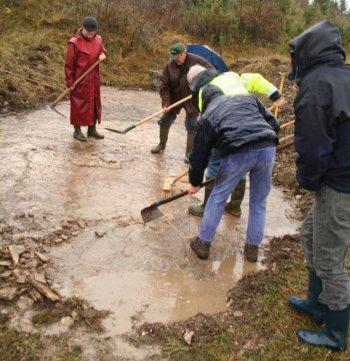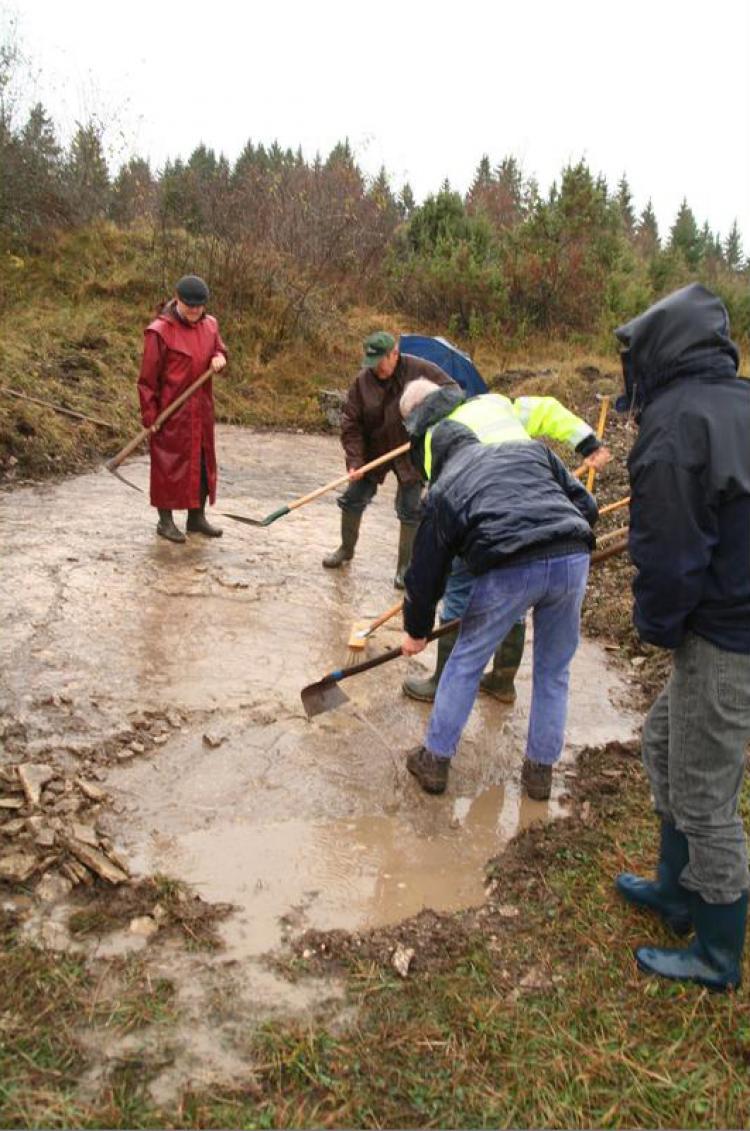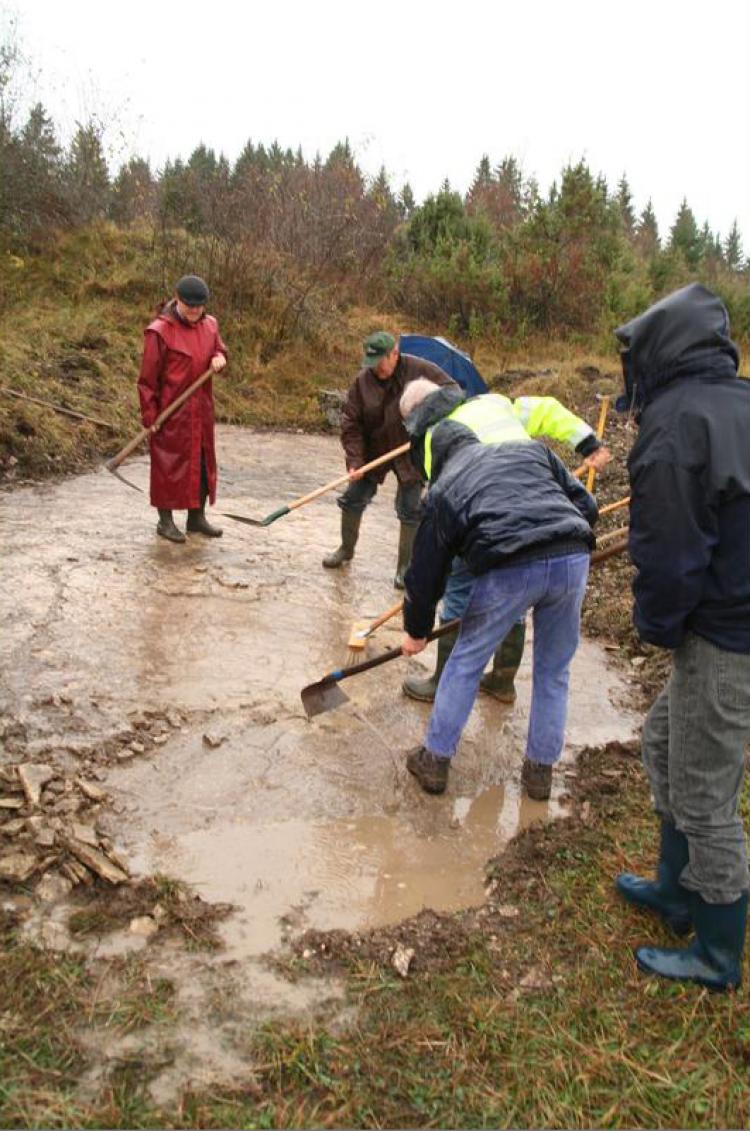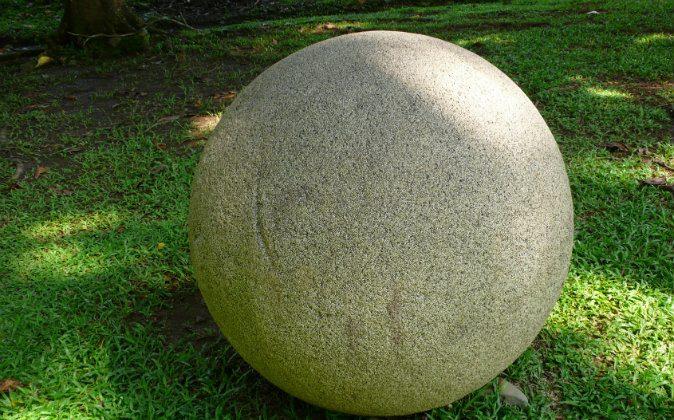Amateur archeologists have discovered what may be the biggest dinosaur tracks ever found. The prints, made by sauropods more than 150 million years ago, were found near the small village of Plagne in Southeast France. They measure up to about 6.5 feet in diameter and experts hope to find several thousand of them.
Retired schoolteacher Hélène Marcaud was the first to stumble upon the tracks. She had been searching the site in France’s Ain region along with co-discoverer Patrice Landry, a geologist by trade. Both are members of the Naturalists Society of Oyonnax, which has been searching the area for 10 years.
“While strolling around, I spotted a hump that didn’t seem particularly big at first, but that resembled traces I saw in [the archeological site of] Loulle. I told Patrice, who started to clear the tracks—we had brought tools in the car.” said Marcaud in a press dossier.
Jean-Michel Mazin from the French research institute National Center for Scientific Research (CNRS) was very impressed when he was called upon to authenticate the site alongside geology expert Pierre Hantzpergue. “We are on a really colossal site, the likes of which the world has never seen. These are very likely the biggest tracks of sauropod dinosaurs ever discovered, and judged by the extent of the site and what has been found so far, tracks of 100 meters [328 ft.], 150 or 200 meters will very likely be found,” said Mazin.
An exceptional combination of circumstances that happened over time was necessary to preserve the
prints. At the time the prints were made, the site would have been a coastal plain with vast muddy areas, occasionally covered by the sea during storms or very high tides. The dinosaurs walked on the mud, which then dried and was submerged. Sediments that deposited later on would protect the prints. In modern times, logging operations eroded the ground, which allowed the tracks to be discovered.
According to Mazin, the animals weighed 30, 40, or even 50 metric tons. “Much larger than a Diplodocus.” The creatures walked on all fours, but most of their weight was carried by the hind legs.
He urged visitors: “Come back in 3, 4 or 5 years to see what has been found on these few hectares of sauropod tracks.”
An area of about 24.7 acres (10 hectares) is to be designated a protected site. Scientists are urging the public not to walk on or take stones from the prints. It should take years to uncover all prints.
Retired schoolteacher Hélène Marcaud was the first to stumble upon the tracks. She had been searching the site in France’s Ain region along with co-discoverer Patrice Landry, a geologist by trade. Both are members of the Naturalists Society of Oyonnax, which has been searching the area for 10 years.
“While strolling around, I spotted a hump that didn’t seem particularly big at first, but that resembled traces I saw in [the archeological site of] Loulle. I told Patrice, who started to clear the tracks—we had brought tools in the car.” said Marcaud in a press dossier.
Jean-Michel Mazin from the French research institute National Center for Scientific Research (CNRS) was very impressed when he was called upon to authenticate the site alongside geology expert Pierre Hantzpergue. “We are on a really colossal site, the likes of which the world has never seen. These are very likely the biggest tracks of sauropod dinosaurs ever discovered, and judged by the extent of the site and what has been found so far, tracks of 100 meters [328 ft.], 150 or 200 meters will very likely be found,” said Mazin.
An exceptional combination of circumstances that happened over time was necessary to preserve the
prints. At the time the prints were made, the site would have been a coastal plain with vast muddy areas, occasionally covered by the sea during storms or very high tides. The dinosaurs walked on the mud, which then dried and was submerged. Sediments that deposited later on would protect the prints. In modern times, logging operations eroded the ground, which allowed the tracks to be discovered.
According to Mazin, the animals weighed 30, 40, or even 50 metric tons. “Much larger than a Diplodocus.” The creatures walked on all fours, but most of their weight was carried by the hind legs.
He urged visitors: “Come back in 3, 4 or 5 years to see what has been found on these few hectares of sauropod tracks.”
An area of about 24.7 acres (10 hectares) is to be designated a protected site. Scientists are urging the public not to walk on or take stones from the prints. It should take years to uncover all prints.







Friends Read Free